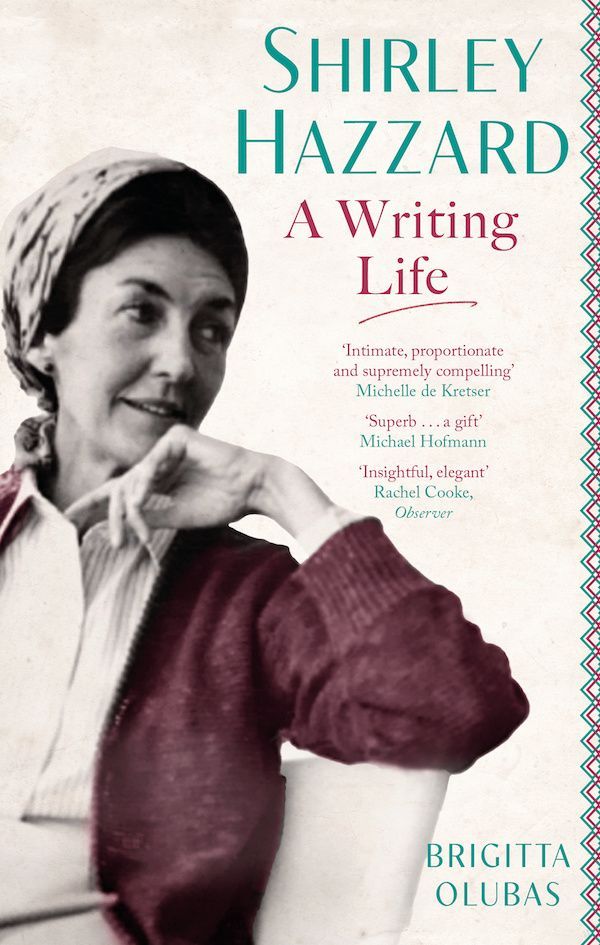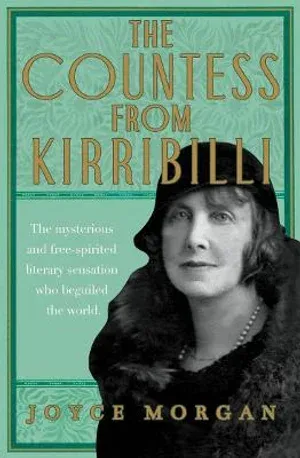Shirley Hazzard, A Writing Life
By Brigitta Olubas
Published by Hachette Australia
ISBN
9780349012889
Highly acclaimed author, Shirley Hazzard's story from the suburbs of Sydney’s North Shore born, to Reg and Kit Hazzard, in 1931 is deeply interesting with occasionally humorous reading intertwining her life and her writing.
Hazzard's parents met in the offices for the construction of the Sydney Harbour Bridge and married in 1927. They had two daughters, Valerie and Shirley who was the younger by two years.
Her father Reg had a curious past which seems be shrouded in mystery. He was born in Newport, Wales, then some how arrived in Kempsey, New South Wales. It is unknown how it got from Wales to New South Wales.
He was subsequently adopted by Pauline Hazzard, the widow of Charles James Hazzard, a master baker and pillar of the Kempsey community. After his untimely death on a cricket pitch in 1906, Pauline became more engrossed in the local community and a friend of the local school. It was here that she was attracted to the orphan Reginald by his natural intelligence and abilities. Pauline Hazzard adopted Reg. Now the focus turns to Catherine known as Kit and her Scottish past and heritage.
After the Harbour Bridge was completed, Reg started working for Australian Iron and Steel, where he enjoyed a successful career. He built a new three storey house in Mosman for the family, overlooking Balmoral Beach, which two years later he sold on a whim to someone who was walking past the home and without discussing it with Kit which added fuel to their already fiery relationship. At the outbreak of WWII he was seconded to the Ministry of Munitions as a senior official and the family moved to Beauty Point.
After this background introduction the biography switches to Shirley, who started reading the books in the family home, at the age of four. Over the subsequent years, and into her teens, she became totally absorbed by poetry and 19th century novelists.
Shirley had a rare talent She could memorise poetry and prose, which held her in good stead for the rest of her life. During her teens, she started writing poems and short stories and declared, she was now a writer.
After the war, Reg was promoted to Australian Trade Commissioner, first in Hong Kong, then Wellington, New Zealand and later to New York. During this time, Shirley was seeking out the literary fraternity and forming lifelong friendships.
When she arrived in New York, she found work at the United Nations. Shirley made literary friends within and outside the UN. She was attracted to more mature men, who saw her as being attractive, intelligent, intellectual, amusing, and a raconteur. She developed many relationships, some leading to quite a number of affairs, with mostly older men, which did not end well. The author speculates that she was compensating for the lack of love in her loveless, 'war-torn' family.
When Shirley Hazzard heard that the UN required staff in Naples, she applied to move to Italy. She spoke fluent Italian, as she had learned the language in Sydney during the era when many Italian migrants went to live in Australia. When she arrived in Italy on her twelve month assignment she found a sense of coming home. She was never happier.
Upon returning to New York, Shirley re-established her connection to her friends' networks and met and befriended the Scottish writer, Muriel Spark, who had arrived in New York to promote her new novel, 'The Prime of Miss Jean Brodie'. They became inseparable friends.
One day, Muriel Spark invited Shirley Hazzard to a party and told her there would be a man there that she should marry. This was Francis Steegmuller, recently widowed, who was a celebrated biographer and translator. The author devotes a full chapter to Francis' life, his family history and his marriage of twenty five years to his late wife, culminating in the meeting with Shirley.
They honeymooned in Europe and she introduced him to Solaia, where she had holidayed for the past five years, and also to Capri. Many of his friends had heard of her, through her published works.She, in turn, introduced Francis to all her friends, including her ex Hong Kong friends, now living in the UK.
At the time Francis was working on the biography of Gustave Flaubert, the 19th century French novelist. As they were both writers, it was easy for them to work on their own projects while in each other's company. When Francis had to travel to interview people who knew the person whose biography he was writing Shirley often accompanied Francis.
Over their thirty year marriage, they wrote and published many books and travelled to many countries, from their homes in New York and in Capri. They had, friends all over Europe and the US. They visited them and also welcomed them to their homes in New York and Capri. Shirley became an honorary Capresian, a status given to only a few outsiders.
As time went by, they often received phone calls and letters with news that some of their friends had died. Some within days of each other. It was a sad time for them. When Francis' health began to wane, Olubas takes the reader through the whole journey of his demise.
After his death in 1994, Shirley tried to continue with her life, but decided to pack up and move from the Capri apartment they had occupied for twenty five years. She returned to many places they had visited together reliving happy memories, tinged with the loss of her dearest love.
Shirley Hazzard was awarded the US National Book Prize in 2003, the 2004 Miles Franklin Award and the 2005 William Dean Howells Award for what became her last book, The Great Fire, which was also shortlisted for the Orange Prize for Fiction, long-listed for the 2004 Man Booker Prize, and named a 2003 Book of the Year by The Economist.
One of her previous books, The Bay of Noon was nominated for the Lost Man Booker Prize in 2010. She was a Fellow and Honorary Fellow of several Academies and Societies.
Later, in 2011, sadly she lost the use of her legs after a fall, which cracked her hip bone. Together with her continuing struggle with dementia, she began to go downhill, eventually becoming bedridden. Shirley Hazzard died on 12 December, 2016 and her ashes were mixed with Francis' and buried in the family plot in St Mary's cemetery, Greenwich, Connecticut.
The author, Brigitta Olubas, a Professor of English Literature at the University of New South Wales, clearly spent an enormous amount of time researching this fascinating and very well written book. She presents an amazing amount of detail, not only about Shirley, but the people with whom Shirley shared her life.
I highly recommend reading. - Renewed by Ken.
The author
Brigitta Olubas is professor of English in the School of the Arts and Media at the University of New South Wales, Australia. She published the first scholarly monograph on Hazzard's writing and edited Shirley Hazzard's essays, We Need Silence To Find Out What We Think and Shirley Hazzard's Collected Stories.
This is an independent review, I am not paid by the book publishers, so.If you Liked this review - please Buy me a coffee









